The long lonely call hung in the night, with notes from a musical scale known only to canines. The next morning, a ranger would tell me it was a coyote, but at that moment — and even now, remembering — I’d swear it was a wolf: one call, not many, and lower-pitched than the coyotes I’d heard before. The difference between a cello and a chorus of pennywhistles.
I was more than 2,000 miles into a 3,000-mile walk along the Continental Divide National Scenic Trail, hiking from Mexico to Canada through five states, 25 national forests, and Rocky Mountain, Yellowstone, and Glacier National Parks. After more than four months, the routines of wilderness living — sleep eat walk eat walk eat sleep — were as comfortable as my broken-in boots; so were the daily chores of route finding, fording rivers, stepping around rattlesnakes, and hanging food in trees where bears presumably couldn’t requisition it. But the wildness of northern Wyoming was a different order of magnitude, and something had shifted inside me. For the first time, I was acutely aware of just how thin the nylon barrier was that separated me from whatever lurked outside.
The next morning, the ranger talked wildlife. Moose injured more tourists than bears, he said, and buffalo were dangerous, too. Visitors got gored, or stomped on: 1,500-pound animals with unpredictable temperaments made lousy selfie-plus-a-wild-beast subjects. As for bears: According to the National Park Service, between 1980 and 2014, there were 45 human injuries caused by grizzly bears in the backcountry, an average of one per year — which means, according to some statistical modeling magic, that the odds of a visitor being injured by a bear in Yellowstone are 1 in 2.2 million.
But statistics are only reassuring in theory. Back in reality, the trail I’d wanted to take was closed because a grizzly mom and cubs had been sighted in the area. A parallel trail was still open. I wondered aloud if the bears knew which trail was for them and which trail was for us. The ranger laughed and sat back looking unworried, but then he carried a gun. I carried a can of bear mace, holstered in a pouch attached to the hipbelt of my backpack. I considered just how fast I could pull it out, pop the safety, aim, and spray. Even if I were the fastest draw in the West, as a defense against the contiguous 48’s most fearsome predator, my weapon felt as insubstantial as the tent I’d lain awake in the night before.
I headed up the Snake River, presumably away from the mother bear. The trail loosely paralleled the Continental Divide through the remote southern borderlands of Yellowstone National Park. A bush shifted in the breeze — or was that a bear? A cloud made a shadow on a boulder — or maybe it was a bear cub? Ahead, a plume of smoke drifted lazily upward. A forest fire? Campsite? But no: It was a backcountry geyser basin spouting sulfurous steam; a faint odor of rotten egg hung in the air. You could believe the border between Earth and hell had broken open here, that the cauldrons of the underworld spewed their stinking concoctions into the clear mountain air. With my mind on grizzly bears, I’d completely forgotten where I was. There were no signs, no boardwalks, no warnings, no guardrails: I saw my first Yellowstone geyser much the same way John Colter, usually credited with being the first European to explore Yellowstone, might have seen it: as a complete surprise.
We have only handed-down hearsay for the details: Colter had earlier been a member of the Lewis and Clark expedition, which passed north of Yellowstone in 1806 but missed it entirely. A few months later, as the expedition was drawing to its close, Colter was honorably discharged in order to guide a trapping party back west toward the Upper Missouri. He spent the next four years exploring the northern Rockies, including the region we now know as Yellowstone. Colter was among that self-selected subset of people who think that walking across half a continent and back was a fine way to pass a year or two. When he finally returned east in 1810, he brought stories of adventures and close brushes with death. Audiences thrilled to his tale of Blackfoot Indians who killed Colter’s traveling companion and then stripped him naked and told him to run, telling him if they caught him, he would die. But Colter’s descriptions of the landscape were so over-the-top that they were greeted with skepticism and the mocking name “Colter’s Hell”; audiences were more apt to believe tales of Indian attacks than stories of gushing geysers and foaming fumaroles.
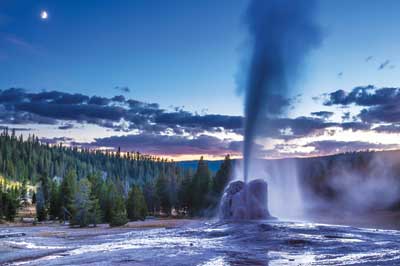
Yellowstone is home to half the world’s geysers. One of 500 in the park, Lone Star Geyser erupts every three hours. (Shutterstock)
Jim Bridger, who explored Yellowstone in the 1820s, fared no better where believability was concerned. In part, that was his own fault: His descriptions of waterfalls falling upward and “petrified trees with petrified birds singing petrified songs” were embellished — okay, slightly more than embellished. But there was truth at the core: What Bridger called a mountain of glass we now know as Obsidian Cliffs, and there is indeed a place where a fish can swim across the Continental Divide — I’ve seen it with my own eyes how the water of Two Ocean Creek runs down the Divide, slows at a saddle, then splits in half, although the only thing that crossed the divide when I was there was a little twig I had tossed in the water to see which ocean it would turn toward.
And so it went. The few people who made their way to remote northwestern Wyoming and returned with stories of geological oddities were roundly thought to be liars. Philadelphia’s Lippincott Magazine rejected one expedition’s story about Yellowstone, saying, “We don’t print fiction.”
And then, in the way of tectonic plates that rearrange themselves to create a new reality, the weight of evidence shifted. Finally, there were too many reports to ignore. Fact was, indeed, stranger than fiction: In a little-known corner of northwestern Wyoming, rivers boiled, mud pots bubbled, and geysers spouted, all in a mountain landscape rich with wildlife and forests.
Here’s the part I find remarkable: Those in the know — the explorers and surveyors and expedition members who were there first — the ones who could have claimed the land, built it up, maybe even ruined it, didn’t.
Instead, there was a consensus of sorts, so widespread that historians still argue whose idea it was, that Yellowstone should be protected for future generations. In 1872, it became the first national park. Not an amusement park. Not part of some commercial boondoggle. Simply a park, with essential services and infrastructure to handle visitors, and the goal of protecting the landscape, unspoiled and undeveloped, for the future. Over the next 44 years, another 34 national parks and monuments would be established and then gathered together into the National Park Service, established by an Act of Congress in 1916. Wallace Stegner called the national parks America’s “best idea,” one that inspired national park systems around the world. Today, 100 years later, America’s National Park Service manages more than 400 units ranging from caves to coral reefs to the St. Louis Gateway Arch to former Japanese internment camps to enormous country-sized swaths of Arctic wildlands — including examples of virtually every environment, ecosystem, and landform to be found in the country.
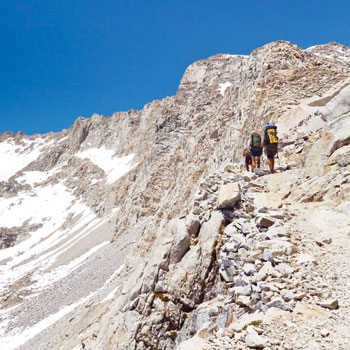
I can’t think of a single thing in my daily routine that is the same as it would have been when the National Park Service was founded 100 years ago: I heat my house with oil, I make coffee in an electric espresso machine, I bank by computer, and I read books on a tablet. But the national parks seem to be places where time stands still: the ranger uniforms, the appropriately rustic buildings, the wooden signs; everything covered with park-service brown-and-green. And the backcountry, where hiking trails act as a sort of time machine, leading us to a world stripped to simple essentials. In modern life, we forget what it means to travel the way most of humanity did for almost all of history, at two or three miles an hour. We forget what a mile actually means. Walking into the backcountry of our national parks, we remember.
Consider this: In the High Sierra of California, following the Pacific Crest Trail across Yosemite, Kings Canyon, and Sequoia national parks, you can hike a full 200 miles — the entire straight-line distance between Washington, D.C., and New York City, and considerably more than the distance between Portland, Oregon, and Seattle, Washington — without seeing a single road, car, cell tower, fence, electric line, or human settlement.
It’s the oldest cliché in the book: largeness of landscape, smallness of human. But when you’re standing atop a high pass looking ahead to the prospect of walking some 500,000 steps, give or take, over mountains, feeling small isn’t so much a cliché as an acute realization of exactly how your all-too-human body measures up against an untamed landscape of high peaks and passes.
Going to Extremes
Facts and figures about our national parks
| Oldest | Youngest |
| Yellowstone: 1864 | Manhattan Project: 2015 |
| Largest | Smallest |
| Wrangell-St. Elias: 13,005 square miles | Hot Springs: 8.7 square miles |
| Highest point | Lowest point |
| Denali: 20,320 feet | Death Valley: 270 feet below sea level |
| Hottest annual temperature |
Coldest annual temperature (excluding Alaska) |
| Death Valley: 134 degrees at Furnace Creek | Yellowstone: 33 degrees |
| Most annual visitors | Fewest annual visitors |
| Great Smoky Mountains: 10 million | Gates of the Arctic: 13,700 |
So: Forester Pass on the border of Kings Canyon and Sequoia National Parks, which, at 13,200 feet, is the highest point on the Pacific Crest Trail. Standing there (really, gasping for breath), I felt a curious mixture of superhuman strength (I’d climbed up here from down there, hadn’t I?) and heart-racing terror (between me and the next piece of pavement, I’d have to climb another five snow- and ice-covered passes, each between 10,000 and 13,000 feet). Below the pass, the mountain dropped away like a chute in one of those extreme-ski videos where a good run means cheating death. In July and August, the trail clings to the steep pitched wall via a corkscrew series of hairpin switchbacks, but I’d arrived in mid-June, and a blanket of snow still covered any slopes gentle enough to hold snow; on the steeper slopes, the rock was bare. Avalanches were a possibility. And if I fell — forget about calling for help. In this zero-bar zone, I’d be better off with carrier pigeons. The nearest road was at least two days’ walk away. I looped the ice ax strap around my wrist and gripped the adze. In the rest of the world, computers connected people and businesses, jet planes carried travelers across oceans, and bank transactions occurred at the speed of light. Here, atop the pass, it may as well have been the year 1868, when John Muir first came to these mountains.
I hasten to add that it’s not necessary to take your life in your hands to experience the High Sierra, or any other backcountry in any other national park. I’ve crossed these parks in July and in August, when the snow is down and the crowds are up, when it’s easier to put one foot in front of the other, not to mention safer. Either way, I marvel at the fact that in a world as protected and regimented as ours, our national parks and our wilderness areas make it possible, within a few hours’ drive of a major metropolis, to walk into a world of ice and snow and high mountains, where civilization is so far away that for all practical purposes — rescue, resupply, a hot bath, a Wi-Fi connection — it might as well not exist.
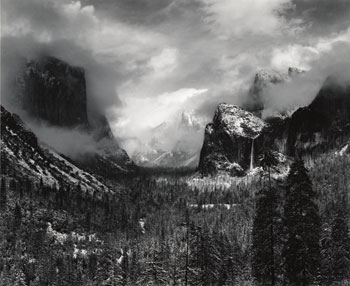
Nor do you have to sleep in a tent to get the full experience: an eyeful of more than you can possibly absorb. I remember my own first visit to Yosemite Valley, when I was young and jaded. I’d just gotten off another long hike in the high country, and I was taking a short detour by car into the Valley. I’d been overwhelmed in the high country; at every single step, you could trip and fall and your camera would shoot off a picture that could, today, make you an Instagram star. I didn’t expect to be overwhelmed on a busy road with cars and tourists and buildings. But then the road bent and the trees opened and I saw the view — that view — Ansel Adams’ view of El Capitan among the swirling black-and-white clouds, the view that each of Yosemite’s annual four million visitors gets to see smack as they enter the park. It stopped me in my tracks. I had to pull off the road for fear I’d wreck the car.
Which was pretty much the same reaction (minus the car) John Muir had when he arrived in Yosemite in 1868, four years after the federal government deeded Yosemite to the State of California for permanent protection. Muir had been peripatetic for a while; he’d explored the northern United States and Canada, then walked a thousand miles from Indianapolis to the Gulf of Mexico. He’d sailed to Cuba, hopped over to Panama, crossed the isthmus (there was no canal then), and caught a steamer to San Francisco, where he asked directions to “someplace wild.” That sent him 200 miles east on foot to the Sierra Nevada, where a rancher offered him a job as a sort of shepherd supervisor: He was to keep an eye on the guy who kept an eye on the sheep.
Muir fell in love with the land, and as lovers tend to, he spent those heady early days obsessing. He took notes on everything from the habits of marmots to the cycles of alpine flowers. He described glaciers and pine cones and the destructive grazing habits of the sheep (which he referred to as “hoofed locusts”). Arriving in Yosemite, he wrote, “Never before had I seen so glorious a landscape, so boundless an affluence of sublime mountain beauty.” Muir would travel widely for the rest of his life; he once wrote, “The world is big and I want to have a good look at it before it gets dark.” But he would always return to the Sierra. It inspired not only his writing, but his activism: founding the Sierra Club, helping to establish Yosemite as well as Sequoia, Mount Rainier, Petrified Forest, and Grand Canyon National Parks, and lobbying for the formation of the National Park Service.
My response to the same view was more ordinary: I took pictures and I drove to the main viewpoints, every inch a tourist. I did climb to the top of Yosemite Falls, where too much curiosity about what lies just over the edge can send you falling to your death. It’s a hike well worth the huffing and puffing. The view can make you understand how a landscape can be so powerful that you’d change your life to save it for the next generation.
The next generation needs it.
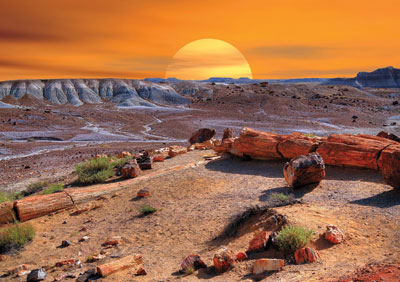
Years ago, I used to lead small groups of Washington, D.C., city kids into the wilds of Shenandoah National Park. We’d sleep in an Appalachian Trail shelter not more than a couple of miles’ walk from Skyline Drive, and the kids would marvel, and sometimes cower, at the great wilderness they thought they’d entered.
At night, the wind would send tree branches rattling against the corrugated iron roof, and deer would snort outside. It’s a startling sound, if you’ve never heard it, somewhere between a bark and a cough — less like Bambi, more like something that could eat you for dinner. The Shenandoah backcountry isn’t true wilderness, what with the highway and the resort and the restaurant and the parking areas and even the lean-tos themselves, but that didn’t matter: The definition of wilderness is very much in the eyes (in this case the ears) of the beholder. A perhaps apocryphal quote from early American settlers came to mind: “Wilderness is a dark and dismal place where all manner of wild beasts dash about uncooked.” I knew what the kids felt like. In Yellowstone, with the howling wolf and the unseen grizzly, I’d felt that way myself. Being in the wilderness makes you reexamine your place on the food chain — an unsettling feeling, even if the only thing outside your tent is a white-tailed deer.
The kids were usually sleepless the first night. By the second night, they were ready to collapse. Hiking in the woods for two days straight can have that effect. The kids learned to work the camping stoves, and we hiked around looking for animal tracks. I was just a hiking guide, not a social worker or a psychologist, but it seemed to me that some of these kids had tough lives back home, and that the outdoors acted as a gentle tonic. “I like it here. I have to breathe harder, but it feels like I can breathe better,” one of them told me. Which nicely sums it up.
In 1916, when Congress was considering the bill that would ultimately establish the U.S. National Park Service, the Post repeatedly showed its support. That year, a quick succession of editorials from Post editor George Horace Lorimer laid out his arguments for passage of the bill in the issues for January 1, February 12, and March 18.
Become a Saturday Evening Post member and enjoy unlimited access. Subscribe now
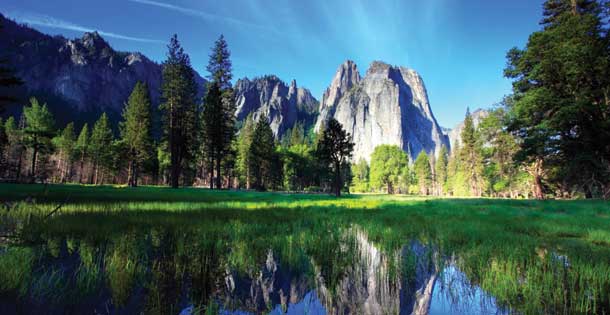
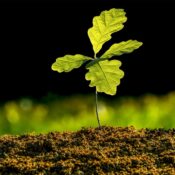
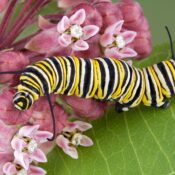
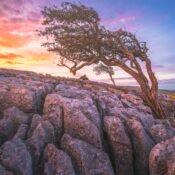
Comments
Reading your article truly was like being there, it reminds me of when my family and I would travel to Yellowstone when I was a boy, decades ago. How clear the air was, that my photographs were more beautiful because of the pristine environment. Seeing Old Faithful and also the Old Faithful Inn, a long hike with my brother back to a secluded lake, during which time we saw only one other person.
Nature is so alive there, it is like this too in Yosemite when away from the madding crowds. We only leave nature alone, or at the very most, lightly walked, for nature to recover in all it bounteous beauty.
Thank you for writing this article, reminding us of the national treasures that we have in the form of our national park system. It’s a great reminder of one of the things that makes this country so great.
Sadly, many of the Republicans (even the current candidates for President) think that the National Parks should be sold off and closed.
Mitt Romney told the Reno Gazette-Journal that he doesn’t know “what the purpose is” of public lands. Former Representative Richard Pombo proposed selling national parks to mining companies in 2005. Representative Jason Chaffetz (R-UT) proposed selling off 3.3 million acres of the public lands. Rick Santorum told Idahoans that public lands should go “back to the hands” of the private sector, and Ron Paul advocated for public lands to be turned over to the states. Probably worst of all, GOP thought leader Grover Norquist has advocated just turn them over to the states, or (believe it or not), sell them to the private sector.
What a disaster. Once these are gone, they’re gone for good. I’d beg your readers to please contact their representatives and tell them hands off of our national parks. Save these for our kids and grandkids to enjoy.